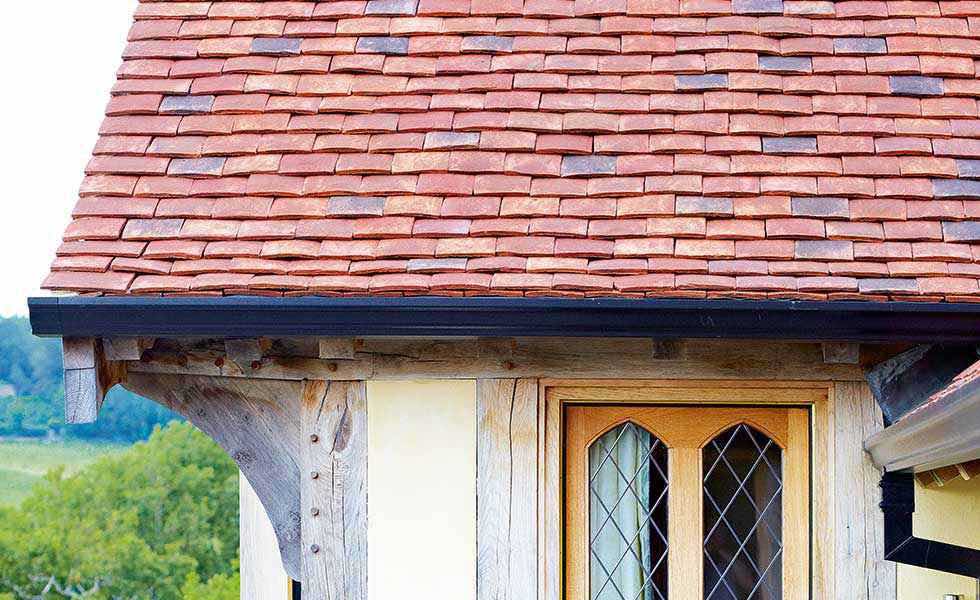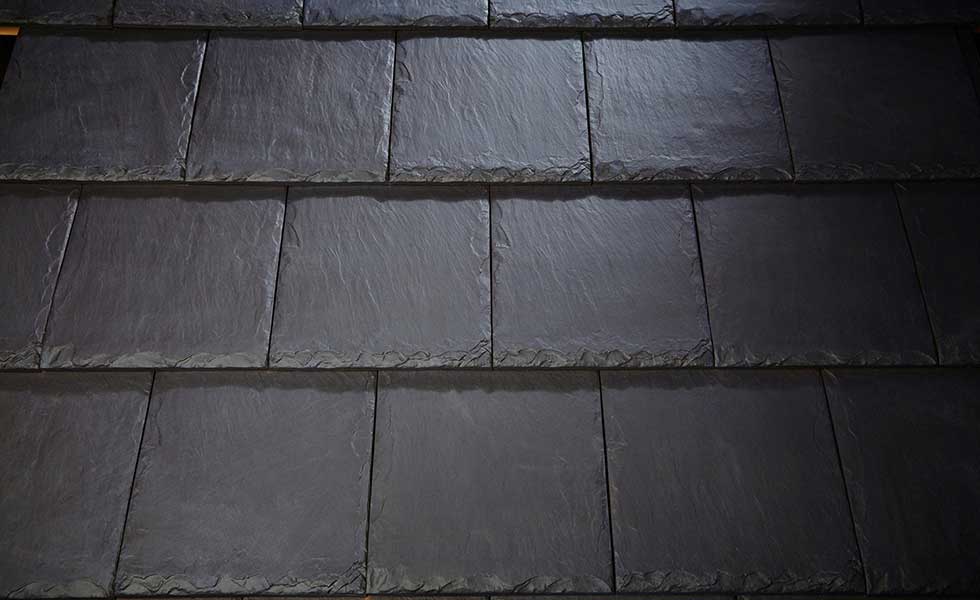Tiling a Roof: How Much Does it Cost?
Whether you opt for slate or tile, your roof covering budget will vary as your choice will have a big impact on labour costs too

The choice of roof covering can have a significant impact on the eventual look of the home. And yet, in the initial stages, much more attention is lavished on the layout and the external cladding of the walls. However, it is the roof that makes an enclosure into a home and the choices tend to reflect the region in which the home is built.
Of course, there are many forms of roof covering, from the traditional thatch to the more contemporary sheet roofing; not to mention green roofing, which is taking up an increasing chunk of the market. Nevertheless, for most self builders the choices revolve around plain tiles, interlocking tiles and slates.
Need expert advice or design inspiration for your project? Get two free tickets to the Homebuilding & Renovating Show
The costs set out below relate to a modest L-shaped bungalow with a roof area of around 180m2 and with one valley, hip and ridge tiles, and a universal dry hip and ridge system. To simplify the comparison, the same clay ridge and hip tiles are specified.
The valleys for the plain tile and slate options are assumed to be lead, while the valley for the interlocking tile option is GRP. (If valley tiles were required for the plain tile option the price would subsequently increase, as each valley tile would cost around £5).
In Scotland, a layer of sarking decking is required over the trusses and beneath the underfelt, necessitating counter battening down the roof.
(MORE: Ultimate Guide to Roofs)
Plain Tiles
These are the small – usually 267x165mm – rectangular tiles that give so many country properties that distinct feeling of mellowness. Traditionally they were made of clay and they often had a camber naturally built into them in one or both directions, causing them to lie slightly unevenly. Modern versions in either clay or concrete can mimic this, but the older and more traditional tiles are still available — albeit often handmade and, therefore, much more expensive.
- Of the three mainstream roof covering choices, plain tiles, whether clay or concrete, tend to be the most expensive, and that’s mainly down to the increased labour costs of having to lay and fix around 60 tiles per square metre.
- The overlap on the tiles means that there is practically three times the amount of battening required and, while the batten itself is cheap, the labour to fix it is much more intensive.
| Tiles (10,716 tiles @ £450/1,000 | £4,822.20 |
| – Labour (14 days) | £3,528.00 |
| Breathable membrane (5 rolls) | £324.60 |
| Batten (@ 31p per metre) | £527.85 |
| – Labour to underfelt and batten | £2,666.52 |
| Eaves support tray labour and material | £239.81 |
| Universal dry hip and ridge system and ridge and hip tiles | £3,989.00 |
| – Labour (5 days) | £1,260.00 |
| Valley lead | £92.42 |
| – Labour | £36.12 |
| Nails and fixings | £81.18 |
| Waste clearance | £295.00 |
| Total | £17,862.70 |
Interlocking Tiles
This is the cheapest roof covering option and it is the one that many volume housebuilders default to for that very reason.
Once again, there are many versions both in clay and concrete with some that mimic traditional single roll pantiles, some that emulate (without close inspection) the flat planes of slate roofs and then there are others which unashamedly present a profile in their own right.
Just because they are the cheapest option, doesn’t mean that they don’t have a place in self-build, particularly where many infill plots have to fit in with existing styles and choices of materials.

- Each interlocking tile costs over twice the cost of a plain tile. But, at an average of 11 to the square metre, far fewer tiles are needed and the labour costs for fixing them are significantly reduced.
- The cost of battening the roof is also much less as the gauge or distance between the battens is 300mm or more.
| Tiles (1,980 tiles @ £1,100/1,000) | £2,153.80 |
| – Labour (7 days) | £1,764.00 |
| Breathable membrane (5 rolls) | £324.60 |
| Batten (@ 31p per metre) | £139.50 |
| – Labour to underfelt and batten | £756.00 |
| Eaves support tray labour and material | £239.81 |
| Universal dry hip and ridge system and ridge and hip tiles | £3,989.00 |
| – Labour (5 days) | £1,260.00 |
| GRP valley labour and materials | £61.00 |
| Nails and fixings | £81.18 |
| Waste clearance | £295.00 |
| Total | £11,063.89 |
Slates
The waterways and canals of the Victorian era made the transportation of slates from the Welsh hills much easier and their use and popularity grew. Today, they are still one of the most popular forms of roof covering, despite the fact that only a tiny minority come from Wales and the rest of the UK.
Natural slates are now imported from China, Brazil and Spain in colours that can closely follow the traditional, and much more expensive, Welsh equivalents.
Natural slates, like plain tiles, do not have any drips or contours and therefore have to be laid in such a way that every part of the roof is covered. This means that at some points they may be treble lapped.
Manmade slates are also available — those that directly mimic natural slates are no cheaper but are perhaps slightly more durable. Others conspire to look like natural slates, while actually being interlocking; whether they ever achieve their goal of looking like the real thing is debatable.
| Slates (3,547 slates @ £1.27 each) | £4,504.69 |
| – Labour (12 days) | £3,024.00 |
| Breathable membrane (5 rolls) | £324.60 |
| Batten (@ 31p per metre) | £263.93 |
| – Labour to underfelt and batten | £1,389.60 |
| Eaves support tray labour and material | £239.81 |
| Universal dry hip and ridge system and ridge and hip tiles | £3,989.00 |
| – Labour (5 days) | £1,260.00 |
| Valley lead | £92.42 |
| – Labour | £36.12 |
| Nails and fixings | £81.18 |
| Waste clearance | £295.00 |
| Total | £15,500.35 |
(MORE: What are the options when it comes to roof coverings)
Flat Roof Costs
Flat roofs tend to be priced on a supply and fit basis with some packages (e.g. single ply) including build-up, insulation, etc. as well. This all means comparing like for like is tricky. However, here are the headline prices for those wishing to put something in their budget at an initial stage:
| Felt (torch-on method): | Approximately £40-£50/m² fitted |
| EDPM Single Ply: | Around £80/m² fitted |
| Fibreglass GRP: | Approximately £90/m² (including lead flashing, trim and installation) |
| Green Roof: | From £50/m² for a sedum roof to £200/m² for a fully planted intensive roof (bear in mind that any reinforcements that may be needed for the roof will cost extra) |
| Metal: | Lead costs anything from around £50/m² not including installation. Zinc and copper are more at around £100/m² — again, this does not include installation |
How to Build a Roof
(MORE: Great Roof Design Ideas)
Get the Homebuilding & Renovating Newsletter
Bring your dream home to life with expert advice, how to guides and design inspiration. Sign up for our newsletter and get two free tickets to a Homebuilding & Renovating Show near you.
David is one of the UK's leading self build and plotfinding experts, and a serial self builder who has been building homes for 50 years. The author of Building Your Own Home, now in its 18th edition, and the Homes Plans Book, David spent decades as a speaker and expert at self build exhibitions such as the Homebuilding & Renovating Show. He also helped countless budding self builders find their dream building plots as part of his long-running Plotfinder Challenge series in Homebuilding & Renovating magazine. He has self built 14 homes.

